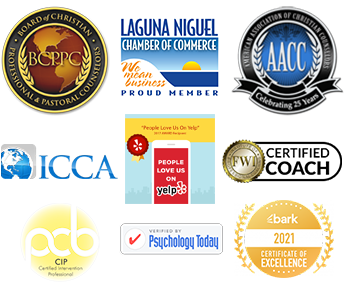
By Randy Moraitis, MA, CIP, BCPC
The holidays are rapidly approaching and most of us have this ideal image of how we want our family lives to be full of joy and peace during this special time of year. This ideal is challenging enough in traditional family systems, but for those who are in a step-family system peace during the holidays can seem like an unattainable fantasy.
These days almost everyone is somehow connected to a step-family system whether in our own home or in the home of our relatives. You may have step-kids, step-grandchildren, step-nieces or nephews, or even get a new step-parent once you are already an adult if one of your parents remarries. If so, then you are
part of what’s called a step-family system.
Step-family systems can be very challenging. Step-families are often referred to as blended families because the hope is to blend two families together. The term “blended family” can be a little misleading as it implies that the two families blend together quickly like a smoothie in your kitchen blender.
The reality is that life in a step-family is more like using a crock-pot, than a blender. In a crock-pot it takes a long, slow time for something to cook. Step-families can take some time to get to a place of peace and harmony in the home.
Here are three quick tips to help step-families get on a healthy path during the holidays. Whether you are part of a step family system, or are someone who works with kids and families, these are great tips for you to know, share, and apply to make our families happier and healthier.
1. Have Extra Grace—The first rule of step-families is to have extra grace! That means to be more
forgiving on a daily basis. There are so many stressful issues inherent in step-families that it is imperative for step-family members to have an overall attitude of extra grace in their homes.
The parents must decide to create a culture of extra grace in their home, and then teach it to their children. And the parents must model the extra grace rule. It is very common that your step children will get under your skin faster and more frequently than your biological children. When you are aware of that tendency, it is easier to control it and exercise grace. A home filled with extra grace is a home where families can begin to blend together in a healthy way.
2. Discipline with Wisdom—In a step family system, discipline dispensed with wisdom goes a long way towards creating the best possible family environment. When step-parents discipline their step-child, this creates a great deal of resentment that may fester over time, be very difficult to overcome, and be a drain on the peace and harmony in the home.
When a child misbehaves and discipline is necessary both parents should discuss the situation and come to an agreement on the proper course of action behind closed doors. They then address the child with the biological parent stating what the discipline is, and the step-parent standing right behind the biological parent showing their support for the decision and their spouse.
Quick example: Billy, who lives with his stepdad and biological mom, stays out thirty minutes past curfew. Step-dad thinks Billy should be grounded for two weeks; mom thinks Billy should lose his cellphone
for a day. Stepdad and mom need to discuss, and perhaps compromise a little, on the course of action, but they have to do it behind closed doors or else Billy will try to divide and conquer if he sees them arguing. Once the decision is made, mom and stepdad approach Billy, with Mom in front doing the talking and
stepdad standing right behind her. Mom lays down the law and stepdad shows his strong support for her.
3. Create New Family Traditions—When two families come together each one has had family traditions in their past that are so important and dear to their hearts. While it is important to honor and respect those past traditions, it is wise to start some new family traditions that are unique to the new blended family.
New family traditions can include family movie nights, family game nights, or a new sport or other activity. And of course the holidays are a great time to start a new family tradition. Some new decorations, a special meal, attending a Christmas Eve service, a snow day, there are numerous possibilities. Be creative and have fun with it…you may be starting something that will last for generations!Happy Holidays to you and your family!
I would love to hear your thoughts on this topic. If you have any questions or comments, please send them to randy@randymoraitis.com or call 949-303-8264.
Websites: www.carepossible.org, www.randymoraitis.com.
About Randy Moraitis
Randy is married to Kim and they live in Laguna Niguel. Together they have a blended family of five adult children and three beautiful grandchildren. (If you don’t believe Randy he will gladly show you pictures!) Randy is a Certified Intervention Professional (CIP) and expert in helping families affected by addiction and/or mental health issues. He is a Board Certified Pastoral Counselor and is both licensed and ordained as a pastoral counselor. He has five professional coaching certifications and loves working with clients on executive coaching, life coaching, wellness coaching and recovery coaching. Randy has a master’s degree with emphasis in theology and counseling, a bachelors degree in management and leadership, and a certificate in health and fitness with emphasis in exercise physiology and sports psychology from UC Irvine. He has been helping groups, individuals and families get mentally, physically and spiritually healthy in Orange County for over 25 years.








